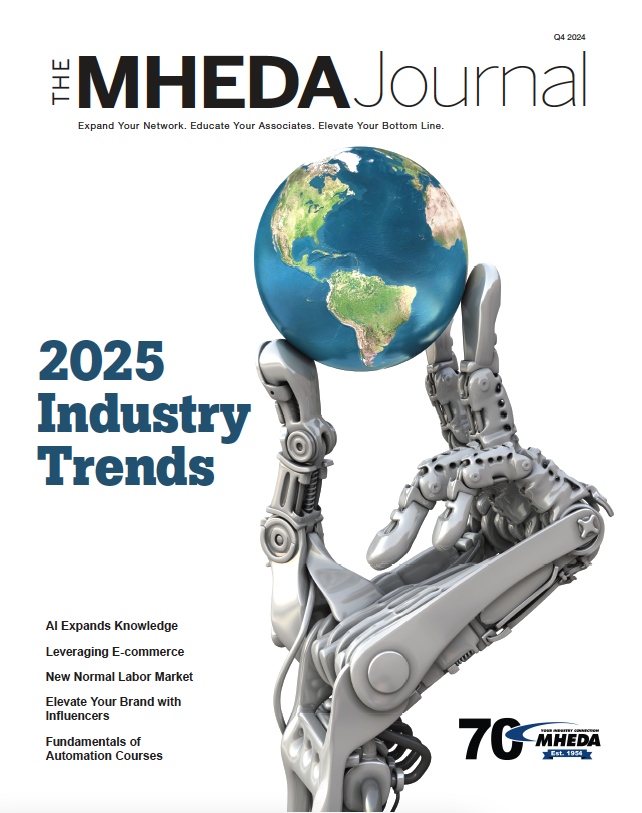MHI Predicts Slower Growth for Material Handling Equipment Manufacturing in 2020 with a Rebound in 2021
February 4, 2020
By George Prest, CEO, MHI
The U.S. economy and Material Handling Equipment Manufacturing (MHEM) enjoyed solid growth in 2018 that carried over into the start of 2019. However, as the tax cut bounce faded and trade war fears escalated, 2019 weakened.
The outlook for 2020 remains one of continued weakness and volatility. However, we must take into account that 2018 and 2019 were record years for this industry and any pullback in 2020 could keep MHEM activity still near very high levels.
On the positive end, the U.S. job market continues to be strong and consumption is 70% of GDP. In 2019, the U.S. had the highest growth rate of any developed economy, according to the IMF. This will continue in 2020, and the downside risks to growth for the global economy and developed economies abroad are likely to remain greater than in the United States.
This weakness is likely to support agreeable monetary policies globally. Equity markets and commodity prices will be highly dependent on the global and U.S. economic outlooks. If weakness persists, this could impact financial markets.
The prospects for a highly charged political environment in the run-up to the U.S. presidential election along with potential impeachment, persisting trade war threats and a China manufacturing recession could add more risk, uncertainty and negatively impact business investment decisions.
Since the material handling industry touches everything, it is important to look at this information and note where your customers are in the business cycle. For example, those who are focused on e-commerce will, in all likelihood, experience growth in 2020 although, perhaps, at a slower rate.
MHEM Forecast
- New Orders are expected to fall modestly in 2019 to $33.7 billion.
- New Orders are predicted to fall to $33.3 billion in 2020 and rebound to $35.4 billion in 2021.
- Shipments are expected to be $34.0 billion in 2019, and they are expected to fall in 2020 to $33.1 billion and rise to $35.0 billion in 2021.
- Domestic Demand is expected to rise to a new record in 2019 to a new record of $38.7 billion but fall to $36.9 billion in 2020 before rising to $39.1 billion in 2021.
The increased levels of volatility justify keeping a close eye on global purchasing manager index (PMI) data as well as the MHI Business Activity Index (BAI). These are important reports with forward-looking implications for the US and global economies – as well as for material handling and supply chain business activity. The most important data to watch for would be consistent and persistent weakness in New Orders and Shipments. If those series remain above or close to the breakeven reading of 50, then there would be fewer risks to the industry overall.
As always, use this and all the other information at your disposal to “follow the money” which will help soften corrections in the economic cycle for your company.
Trade Events are Positive Indicators
Even though the economic forecast calls for more volatility, historically speaking, even a pullback of activity could see MHEM activity near very high levels. MODEX 2020 will be presented in Atlanta from March 9-12 at the Georgia World Congress Center. MODEX has seen positive growth, with the show floor nearly sold out and will showcase the solutions of 950 exhibitors and include 150 educational sessions.
We also saw a record exhibit space draw for ProMat 2021 last November. Such activity signals confidence and a positive indicator for the economy and our industry moving forward.
You can learn more about MHI and our programming at MHI.org.






